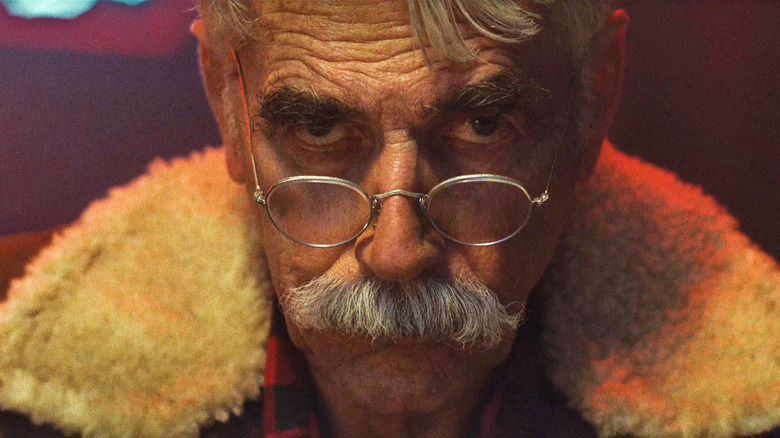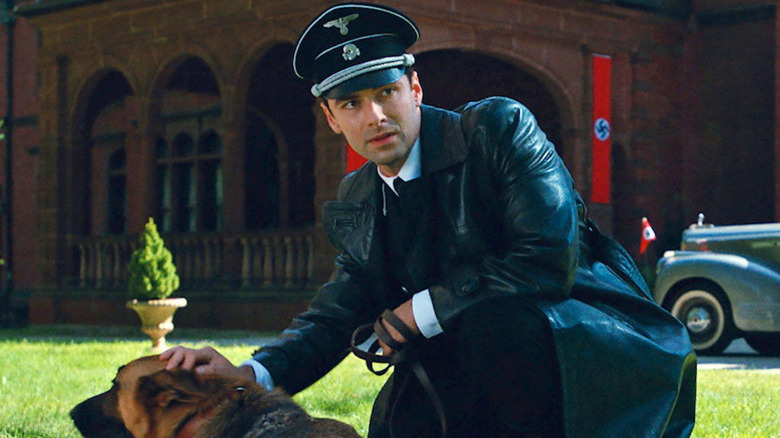Douglas Trumbull's Last Movie Is A Fitting Capstone To His Career
Douglas Trumbull might not be a household name like so many of the filmmakers he collaborated with, but he contributed to the visual effects for some of the most technically ground-breaking sci-fi movies of all time, including "2001: A Space Odyssey," "Close Encounters of the Third Kind," and "Blade Runner." His experience directing the 1983 sci-fi flop "Brainstorm" — which served as Natalie Wood's final film after she tragically died during a production break — led Trumbull to step away from Hollywood, yet he continued to innovate in the 1990s by working on projects like the "Back to the Future: The Ride" theme park attraction and helping to popularize IMAX as a Vice Chairman of the IMAX Corporation.
Trumbull made his grand return to the big screen in 2011, when he served as a visual effects consultant on director Terrence Malick's "The Tree of Life" and helped design the film's dazzling sequence depicting the creation of the universe. In the years that came after, he remained vocal in calling upon the film industry to continue pushing the art of visual storytelling forward and not become overly reliant on digital imagery and trickery. Even with all the well-deserved honors he accumulated, Trumball was an unsung hero of cinema in the eyes of the public up until his death at 79. This is also what makes the last movie he worked on, 2018's "The Man Who Killed Hitler and Then the Bigfoot," such a fitting capstone to his career.
The Man Behind the Legend
Written and directed by Robert D. Krzykowski in his feature debut, "The Man Who Killed Hitler and Then the Bigfoot" stars Sam Elliott as Calvin Barr, an elderly veteran who, circa 1987, spends his days keeping a low profile in a small New England town. However, as we come to learn, the younger Calvin (Aidan Turner) secretly killed Adolf Hitler during WWII as part of a mission that was later classified by the U.S. and German governments. Stranger yet, in the film's present-day, he's called upon by the CIA and Canadian authorities to save the world again, this time by slaying Bigfoot (yes, Bigfoot) and stopping the legendary creature from spreading a terrible virus that Calvin just happens to be one of the few people immune to.
With a setup and title like that, you might assume "The Man Who Killed Hitler and Then the Bigfoot" is just a silly low-budget action-adventure ... and yet, you would be quite mistaken. Instead, much of the film is a ruminative look at growing old, dealing with regret, and what it means to be a true hero — that is, someone who makes great sacrifices (like, in Calvin's case, giving up the love of his life) in order to do the right thing without needing to be fully recognized or celebrated for their actions. It's not just a strong vehicle for Elliott (who imbues the aging Calvin with an authentic sense of world-weariness), but also doubles as a showcase for Trumbull, who was credited as an executive producer and contributed to the film's excellent special effects.
Indeed, "The Man Who Killed Hitler and Then the Bigfoot" uses some top-notch practical effects to bring the action and scenery to striking life when it flashes back to Calvin's covert WWII operation. It even conjures up memories of the fiery alien vessels emerging from cloudy skies in "Close Encounters of the Third Kind" when the older Calvin hunts Bigfoot against the backdrop of the burning wilderness. (Needless to say, there's a reason the film's marketing made such heavy use of this imagery.) This also gives what was surely a low-budget venture a greater sense of scale befitting its noble, long-suffering hero, all while using so many of the techniques that Trumbull pioneered. Combined with its story and themes, the movie makes for a properly meta ode to an artist who, like Calvin, never seemed to have much need for personal glory.
"The Man Who Killed Hitler and Then the Bigfoot" is available to stream on multiple platforms.

